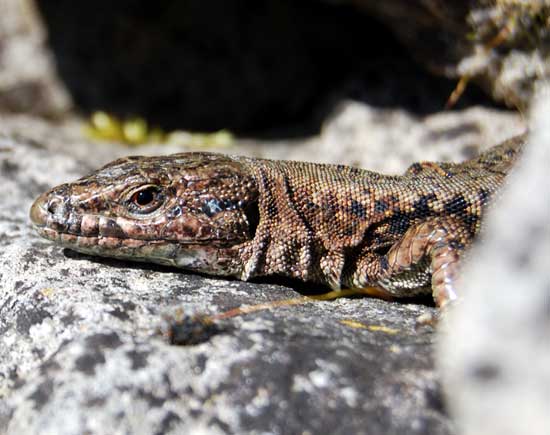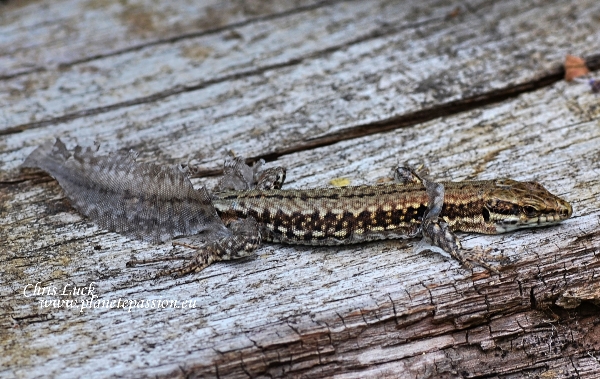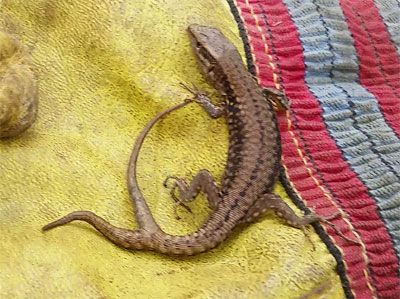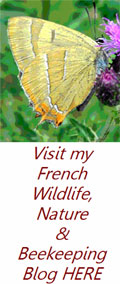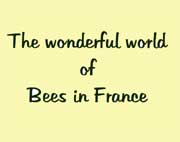Common Wall Lizard
Podarcis Muralis
Lézard des Murailles
This species, Podarcis Muralis is
by far the most common lizard in France. Known in English as Common Wall Lizards they can often be seen in large numbers in French hamlets and villages. They are extremely varied in colour depending on both genetic variability and sexual difference which is quite distinct . They are rarely more than 20 cm and have an elongated appearance, largely as a result of their thin tail, which can be half, or more, of their total length. Males are far more colourful and patterned than females, which are often a drab brown.
Present in all regions of France,
they prefer open, sunny areas with little vegetation, old stone walls, quarries, roadsides and tracks, frequently to be seen, as mentioned, near to old houses where they can be seen scurrying away when approached. Superb climbers, they also swim with ease and can sometimes be seen lying in warm, shallow pools, however they do need to be able to climb out again and are often found dead in plastic containers and buckets. As a rule they tend to be loyal to a locality staying within a radius of perhaps 25 metres and frequently forming what appear to be family groups.
Hibernation should it occur
can be from November until March / April, but this is often interrupted during warmer spells. Breeding starts immediately after hibernation with frequent combats between males. Females lay between 2 and 10 eggs, up to three times in a season, in soft soil or under rocks, these hatch after about 2 months. The eggs are oval, about 10 mm and soft when first laid, swelling up to 15 mm.
A prolific species that seems to be able to maintain a stable population
